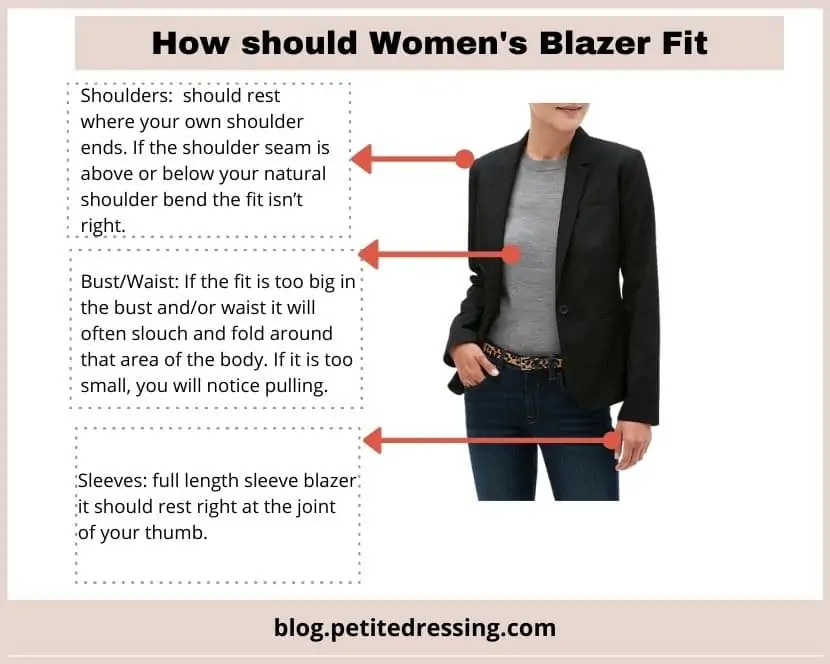Blazers are essential wardrobe staples, ideal for everything from formal events to smart-casual gatherings. However, finding a blazer that fits perfectly off the rack can be challenging. Many people end up with blazers that are slightly too large, either due to sizing limitations, body changes, or inheriting one that doesn’t fit quite right. So, if you’re wondering, “Can a blazer be made smaller?” the answer is yes! Blazers can often be altered to achieve a snug, tailored fit that enhances your appearance and boosts your confidence.
What Does It Mean to Alter a Blazer?
Altering a blazer refers to modifying certain parts of the garment to improve its fit. While many people might think of alterations as minor tweaks, tailoring a blazer can sometimes require intricate work, depending on the areas that need adjustments. Here are a few things to keep in mind:
- Tailoring vs. alteration: Tailoring usually implies creating or making substantial adjustments to the blazer to suit the wearer’s unique measurements. Alterations, on the other hand, are typically smaller changes designed to tweak specific areas like the sleeves or waist.
- Common areas that are altered include:
- Shoulders: The most complex area to alter, as it involves deconstructing the blazer’s structure.
- Chest and waist: Taking in or letting out fabric to achieve a more fitted look.
- Sleeves: Shortening or narrowing for a sleeker fit.
- Jacket length: Sometimes shortened for a more modern style or to fit the wearer’s height.
Blazers have a structured design with padding, linings, and stitching patterns that make alteration slightly more complicated than with less structured garments like shirts. However, with the right approach, a blazer can indeed be tailored to fit you better.
Can All Blazers Be Made Smaller?
The ability to make a blazer smaller depends on several factors, including the blazer’s construction, fabric type, and initial size. While most blazers can be altered to some extent, some are more adaptable to adjustments than others. Below are some elements to consider:
- Fabric Type: Certain fabrics, like wool or cotton, are more forgiving and easier to alter. However, synthetic or stretchy materials might be trickier to work with and may not maintain their structure as well when altered. Fabrics with patterns or plaids require additional precision to match the design after adjustments.
- Lining and Padding: Blazers with full linings or extensive padding, especially in the shoulders, add complexity to the alteration process. Removing padding or adjusting a lined blazer might require more time and a higher skill level, especially to ensure the blazer’s shape and style remain intact.
- Initial Size and Structure: How much the blazer needs to be taken in also matters. For instance, it’s easier to make minor adjustments, such as taking in the sides or hemming the sleeves, than it is to make dramatic alterations. Blazers with heavy shoulder structures (common in formal blazers) are more challenging to resize.
Lastly, the style of blazer (such as single-breasted or double-breasted) impacts what can be done. Single-breasted blazers are generally easier to alter since they have fewer button rows and tend to have a simpler structure than double-breasted styles.

Key Areas for Making a Blazer Smaller
When it comes to making a blazer smaller, some areas are easier to adjust than others. We’ll explore each of these key areas, covering the potential adjustments, challenges, and limitations that come with each one.
1. Shoulders
The shoulders are one of the most challenging parts of a blazer to alter. A properly fitted shoulder is crucial because it sets the entire structure of the garment. Unlike simpler adjustments, such as taking in the waist, altering the shoulders often requires deconstructing part of the blazer’s structure, including padding, lining, and seams. Here’s what you need to know about shoulder adjustments:
- Challenges with Shoulder Alterations: Reducing the width of the shoulders or changing the shoulder structure often involves reshaping the garment’s upper half. The tailor may need to remove shoulder padding or adjust the seam where the sleeve meets the shoulder, which is a complex and time-consuming process.
- What Can and Cannot Be Done: Shoulders can sometimes be taken in slightly, but if they are significantly too wide, it might be best to consider a new blazer. Large shoulder adjustments can alter the entire look and fit of the blazer and may lead to an awkward appearance if not done expertly.
- Cost and Feasibility: Altering the shoulders is one of the costliest adjustments, often ranging from $50 to $100 or more, depending on the complexity. Given the precision required, it’s recommended to only let an experienced tailor handle shoulder adjustments.
2. Chest and Waist
Taking in the chest and waist is one of the most common alterations to make a blazer fit more snugly. A well-fitted chest and waist give the blazer a sharp, tailored appearance and help avoid the boxy look that comes with an overly loose fit. Here’s a closer look:
- How Chest and Waist Alterations Work: Tailors typically take in the blazer from the side seams, allowing them to reduce the excess fabric in both the chest and waist area. This process is relatively straightforward, and many blazers have an allowance (extra fabric) in the seams, making it easier to adjust.
- Limitations on How Much Fabric Can Be Removed: Most blazers allow for taking in or letting out by one to two inches. Beyond that, there’s a risk of compromising the blazer’s structure, especially with lined or padded designs. Taking in the waist too much can also make the blazer feel tight when buttoned.
- Ideal Fit for Chest and Waist: A properly fitted blazer should contour gently to your body without pulling across the buttons. When buttoned, the blazer should have just enough room to fit a fist comfortably under the fabric, indicating the right balance between a fitted and a comfortable feel.
3. Sleeves
Sleeve alterations are common and necessary for achieving a polished look. The sleeve length and width can affect the entire outfit, especially if the blazer sleeves are too long or too wide. Here’s what to consider when adjusting blazer sleeves:
- Shortening vs. Narrowing the Sleeves: Shortening the sleeves is a straightforward alteration. Tailors often remove the buttons, hem the sleeve to the desired length, and reattach the buttons. Narrowing the sleeves is a bit more complex, as it requires tapering the fabric from the elbow down to the cuff to achieve a slimmer fit.
- Ideal Sleeve Length: The standard guide for blazer sleeves is that they should end at the wrist bone, allowing about half an inch of shirt cuff to show. This creates a balanced and intentional look that complements the rest of the suit or outfit.
- Cost and Considerations: Sleeve shortening generally costs $20 to $40, while tapering the sleeves can be slightly more expensive, especially if the tailor needs to work around buttons or complex stitching. Additionally, blazers with working buttonholes (also called “surgeon cuffs”) can be trickier to alter, as it may require re-sewing or removing buttonholes to achieve the right length.
4. Jacket Length
Shortening the length of a blazer is less common but may be necessary if the blazer feels disproportionately long. The length of a blazer has a significant impact on its style, with longer blazers providing a more traditional look, while shorter lengths lend a more modern appeal.
- When to Consider Shortening a Blazer’s Length: Shortening is usually an option if the blazer is only slightly too long. However, excessive shortening can throw off the blazer’s proportions, particularly with double-breasted styles, as it may affect the position of the buttons and pockets.
- Ideal Length for Different Blazer Styles: For most blazers, the ideal length is when the bottom of the blazer hits at the midpoint of the wearer’s hand when the arms are hanging down naturally. This length ensures a balanced look and allows the blazer to pair well with trousers, jeans, or skirts.
- Cost and Limitations: Shortening the length of a blazer is usually priced between $30 and $50, though complex designs may cost more. It’s worth noting that adjusting length is typically easier on single-breasted blazers, as double-breasted versions may require repositioning buttons and pockets, which adds complexity and cost.

How to Determine If Your Blazer Can Be Made Smaller
Before committing to any alterations, it’s essential to assess whether your blazer can feasibly be made smaller. Not all blazers are equally suited to alterations, and understanding what’s possible can save both time and money. Here’s how to determine if a blazer is a good candidate for resizing:
Signs Your Blazer Can Be Altered
- Excess Fabric in Key Areas: If there’s extra fabric around the chest, waist, or sleeves, it’s likely that these areas can be taken in without much difficulty. Minor adjustments to the blazer’s width are common, but drastic reductions may not look natural.
- Ease of Movement: When trying on the blazer, pay attention to how it feels in the shoulders, chest, and back. If you can move comfortably without significant tightness, there’s room to work with. However, if the blazer already feels snug, taking it in further may make it uncomfortable to wear.
- Condition of Seams: Some blazers are constructed with extra fabric in the seams, known as the allowance. This extra fabric provides a bit more flexibility for tailors when making adjustments. You can check the inside of the blazer to see if there’s enough allowance for resizing.
- Style and Fabric: As mentioned previously, single-breasted blazers and certain fabrics are easier to work with than others. A good rule of thumb is to consider if the blazer’s material and style are adaptable to small to moderate alterations.
Blazer Fabric and Alteration Compatibility
Not all fabrics respond equally to alterations. Here’s a closer look at how different materials impact the process:
- Wool and Cotton: These are some of the most versatile fabrics for alterations. Wool, especially, has a natural elasticity that makes it easier to manipulate, while cotton holds up well to moderate adjustments without losing structure.
- Synthetic and Stretch Fabrics: Polyester blends, spandex, and other synthetic fabrics can be more challenging. They don’t always respond well to sewing adjustments, and tailoring them might lead to changes in the blazer’s drape or fit over time.
- Patterned and Plaid Fabrics: While not impossible to alter, fabrics with patterns or plaids require more skill to ensure the pattern remains aligned after adjustments. It’s worth considering this extra challenge, especially if working with a complex or expensive fabric.
Consulting with a Tailor
To get an accurate assessment, consult a tailor to evaluate the blazer and discuss your options. Here’s what to ask during your consultation:
- Feasibility and Cost: Ask if the blazer can be adjusted to your desired fit, and request an estimate of the cost. Some tailors may advise against certain adjustments if they believe the blazer won’t retain its structure or fit well after resizing.
- Timeline for Completion: Especially if you’re tailoring a blazer for an event or specific occasion, find out how long the alterations will take. Basic adjustments typically require a few days, while complex changes may take a week or more.
- Expected Fit and Comfort: Describe your ideal fit to the tailor. A good tailor will be able to give insights on how the final product might look and feel, helping you set realistic expectations.
Assessing Costs and Complexity
Not all alterations are created equal, and some can significantly increase the cost and time investment. Here’s a general idea of average prices for common blazer alterations:
| Alteration | Estimated Cost (USD) |
|---|---|
| Shoulder adjustment | $50–$100 |
| Chest and waist tailoring | $20–$50 |
| Sleeve shortening/tapering | $20–$40 |
| Jacket length adjustment | $30–$50 |
Knowing these price ranges can help you determine if it’s worth altering your blazer or if purchasing a new one is a better investment.

DIY Alterations vs. Professional Tailoring
When considering whether to resize your blazer, it’s important to evaluate whether you can handle the alterations yourself or if you should enlist the help of a professional tailor. While DIY alterations can be a cost-effective option, they come with limitations and risks. On the other hand, professional tailoring ensures the highest quality results, especially when working with expensive fabrics or complex designs.
Pros and Cons of DIY Blazer Alterations
DIY alterations can be a tempting choice, especially if you’re looking to save money. Simple changes like shortening sleeves or replacing buttons are relatively easy to handle at home. However, when it comes to making significant adjustments, DIY might not always be the best route.
Pros of DIY Alterations:
- Cost Savings: Altering your blazer yourself can save you the expense of hiring a tailor. Basic tasks like shortening the sleeves or hemming the blazer are affordable to tackle with basic sewing tools.
- Convenience: You can perform the alterations on your schedule without needing to wait for appointments or deal with tailoring delays.
- Learning Experience: If you enjoy learning new skills, DIY alterations can be a fun and rewarding project that allows you to improve your sewing and fashion skills.
Cons of DIY Alterations:
- Limited Expertise: Unless you’re experienced in tailoring, achieving a professional-quality fit can be difficult. You may end up making mistakes that could permanently damage your blazer.
- Lack of Precision: Complex adjustments like altering the shoulders or chest require expert knowledge of garment construction. Without this expertise, the results may not look polished, and you risk ruining the garment.
- Time-Consuming: Even small adjustments can take time, especially if you’re new to sewing. Tailoring a blazer yourself might take longer than expected, and you might not be happy with the results.
When to Take Your Blazer to a Professional Tailor
Some alterations require more than just basic sewing skills, and this is where professional tailors shine. They have the expertise, tools, and experience needed to make precise and intricate changes, ensuring the final product looks polished and well-fitted. Here’s when you should opt for professional tailoring:
- Shoulder Adjustments: If the shoulders are too wide, a tailor is the best choice. Adjusting shoulders requires deconstructing part of the blazer, and it’s a skill that requires years of experience. Tailors can also make adjustments to shoulder padding, a job that requires meticulous attention to detail.
- Major Fit Changes: If the blazer is much too large in the chest, waist, or back, it’s best to leave the work to a tailor. These adjustments often involve reshaping the garment’s internal structure, a delicate process that can be difficult for someone without tailoring experience.
- High-Quality Fabrics or Expensive Blazers: If your blazer is made of high-end fabric (e.g., wool, cashmere, or silk) or is an investment piece, taking it to a professional tailor ensures that the fabric is treated carefully and that any alterations are done in a way that preserves the garment’s integrity.
- Complex Styles: Double-breasted blazers or designs with unusual features (like intricate buttoning, pleats, or unusual stitching) may require a professional’s touch. These types of blazers often have complicated construction that can be easily ruined without the proper technique.
Professional Tailoring Cost and Timeline
Professional tailoring can be more expensive, but it often results in a more polished and accurate fit. Here are the general costs associated with professional tailoring:
| Alteration | Average Cost (USD) |
|---|---|
| Shoulder Adjustment | $50–$100 |
| Chest and Waist Alterations | $30–$60 |
| Sleeve Shortening/Tapering | $25–$45 |
| Jacket Length Adjustment | $35–$60 |
| Full Tailoring (Major Fit Changes) | $100–$200+ |
The timeline for these alterations depends on the complexity of the work. Basic alterations may take only a few days, but extensive work (like shoulder adjustments or major fit changes) could take up to a week or more.
Choosing the Right Tailor
If you decide to go the professional route, it’s important to choose a reputable tailor. Here’s how you can find the right one:
- Ask for Recommendations: Word of mouth is often the best way to find a good tailor. Ask friends, family, or colleagues who have had similar work done for recommendations.
- Check Reviews: Many tailoring shops have online reviews, which can give you insight into the quality of service, timeliness, and customer satisfaction.
- Evaluate Their Work: If possible, see examples of the tailor’s work before committing. Many tailors have a portfolio or can show before-and-after photos of previous alterations.
- Discuss Your Needs: Ensure that the tailor understands your vision for the fit and can explain what’s possible given the style and fabric of your blazer.
Originally posted 2024-11-13 15:24:07.